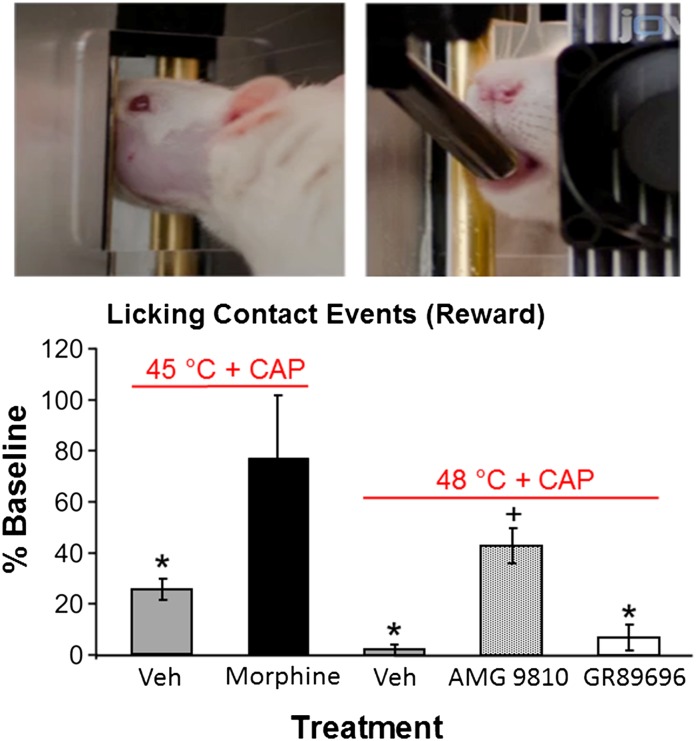Fig. 8.
Noxious stimuli can serve in operant-conditioning procedures as consequent stimuli that punish behavior. The top two panels show photographs of a rat responding in an operant-based method called the Orofacial Pain Assessment Device, which can be used to assess thermal hypersensitivity. In this procedure, the subject must contact the stimulus surface (gold thermode) on either side of an aperture to access a drinking spout containing sweetened milk. The lower panel shows data for operant responding in rats tested in this procedure. Testing was completed for naive (untreated) animals at 45 or 48°C, and rates of operant responding expressed as reward licking events were normalized as a percentage of baseline values at each respective temperature. Increasing temperatures decreased (i.e., punished) responding (data not shown; see Neubert et al., 2005), and treatment with capsaicin (CAP) (0.1% topical cream) to the cheeks for 5 minutes produced hypersensitivity to thermal punishment, such that responding in rats treated with CAP and drug vehicle (Veh) was even lower after capsaicin treatment. Capsaicin-sensitized thermal punishment was alleviated by morphine (0.5 mg/kg) and by the transient receptor potential V1 antagonist AMG9810 (30 mg/kg; +, P < 0.05 vs. Veh), but not by the κ-2 opioid receptor agonist GR89696 (0.125 μg/kg). *P < 0.05 (significant pain-related punishment; i.e., fewer licking contact events than baseline); #P < 0.05 (antinociception; i.e., significantly more licking contact events after drug than after vehicle). This image was kindly contributed by Dr. John Neubert and adapted from Neubert et al. (2007).

